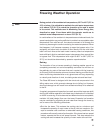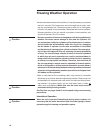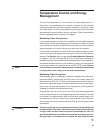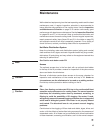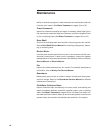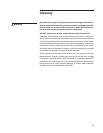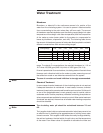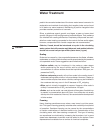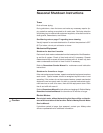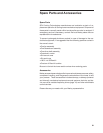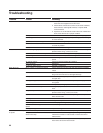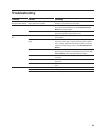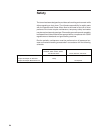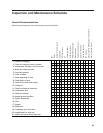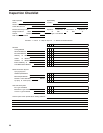
19
predict the corrosive tendencies of the tower water toward concrete. An
explanation and method of calculating the Langelier index can be found
in all books on water treatment. Maintaining a positive Langelier index
provides excellent protection of concrete.
Slime, a gelatinous organic growth, and algae, a green or brown plant
growth, may grow in the cooling tower or heat exchangers. Their presence
can interfere with cooling efficiencies. Proprietary compounds are avail-
able from water treating companies for the control of slime and/or algae;
however, compounds which contain copper are not recommended.
Chlorine, if used, should be introduced at a point in the circulating
water system that will promote rapid dispersal, and residual chlorine
should not exceed one part per million parts water (1 ppm).
Scaling
Scale can be caused by the uncontrolled presence of sulfates, silicates,
carbonates, or oxides, and their effect can be accentuated by the presence
of suspended muds. Some suggestions and limitations follow:
• Calcium sulfate may be introduced in the make-up water stream
and/or produced by the use of sulfuric acid for pH adjustment. The
concentration of calcium sulfate should be kept below 1000 ppm, ex-
pressed as CaCO
3
.
• Calcium carbonate generally will not form scale in the cooling tower if
carbonate scaling does not occur in the condenser. However, if make-up
water contains surplus free carbon dioxide, scaling may be inhibited in
the condenser but may occur in the fill because of CO
2
stripping.
• Silica scale is virtually impossible to remove. However, silica scale is
unlikely if concentrations of SiO
2
are held below 150 ppm.
• Oxides, such as iron oxide, can coat all parts of the system if soluble iron
is present in concentrations above 0.5 ppm. Iron oxides do not usually
develop into thick scales but, like mud, can accentuate the development
of other scales.
Foaming
Heavy foaming sometimes occurs when a new tower is put into opera-
tion. This type of foaming generally subsides after a relatively short period
of operation. Persistent foaming can be caused by the concentrations
of certain combinations of dissolved solids or by contamination of the
circulating water with foam-causing compounds. This type of foaming
can sometimes be minimized by increasing the blowdown, but in some
cases foam depressant chemicals must be added to the system. Foam
depressants are available from a number of chemical companies.
Water Treatment
▲ Caution



